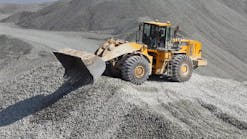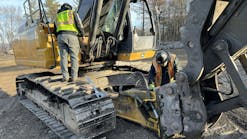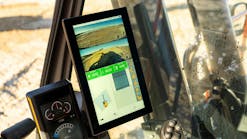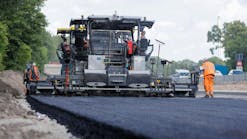Heavy Job aka “HCSS Field”
In March 2021, the JSmith Civil team implemented HCSS’ Heavy Job software (newly named HCSS Field), allowing field crews to report their work time, equipment usage, safety reporting, daily reports, production, etc.
Heavy Job is primarily known as a digital time card tool. It allows foremen to fill out their cards using a laptop or mobile device, and send them directly to the office, eliminating paperwork and double entry.
“With Heavy Job our crews can report anything that impacted their production or slowed them down, and it’s all uploaded to an online server,” says Amory. “It’s accessible by the entire project team by the end of the day. It really speeds up the availability to access that information.”
The software will also automatically analyze a foreman’s time card submission at the end of every work day. The software tells workers immediately—through green or red color coding—whether or not they were behind on production.
“This quick access to everyday production is a huge benefit,” Amory says. “It’s also good motivation. At the end of the day, everybody wants to see green. [If you see] red, you didn’t do what was planned for, so it really puts the information in the foreman's hands and lets them know what’s expected and what productivity they have to meet.”
Heavy Job will also automatically transfer all reported time and production into the team’s accounting software.
“The software details the cost of equipment and man hours spent accomplishing the work, and tells them what their productivity was compared to the estimate,” he says.
Dispatcher
Five weeks later, the company implemented Dispatcher for tracking, scheduling, and dispatching company resources. The software can also be used to assign jobs, and give an expected duration to that job. The program’s digital magnet board allows users to schedule resources—including equipment, crews, and assets—and point and click to add people into crews during setup.
“We dispatch our trucks using the software, schedule equipment moves, and track where labor is going to be weeks or months down the road,” Amory says. “So we can see, ‘okay, we’ve got some availability coming up in two months, we need to be looking for another project to fill this gap right here.' It really gets everybody on the same page.”
JSmith also plans to switch its current GPS system to HCSS Telematics in the near future. The program allows users to track the location and performance of their fleet.
"Those are installed on the equipment, and that system interfaces with Heavy Job and Dispatch," Amory says, "So if you're dispatching a smaller piece of equipment yourself, like a skid steer, it'll pull the GPS location and update the software for the entire team once it's gone. It allows us to check the location of each machine."
HCSS Safety
Within the last few weeks, JSmith also conducted training on HCSS Safety, which better streamlines safety procedures. The software offers pre-built safety meetings and inspections that make relevant content easy to find. Crew leaders can verify and update crew member skills and certifications, use relevant inspections as teaching tools, record safety meeting attendance and topics, track individual employee safety education goals, etc.
"The software allows our team to document equipment inspections to make sure it is safe and ready for use,” Amory says. “It also allows us to report incidents and near misses. When we do that, our safety committee members get an automatic email update.”
In the event of an incident, the software automatically alerts JSmith’s equipment shop. The team is notified via the HCSS app, and can schedule repairs accordingly.
“We want the crews to be responsible for safety in their own way,” Amory says. “Yes we have a safety manager and safety team that inspect the projects and make regular visits, but you want the crew to feel enabled to protect themselves and to manage their safety, and their co-workers safety.
“The software allows them to communicate [these incidents]. You’re not putting it on a piece of paper and turning it in at the end of the week… it’s an immediate alert—'there’s a safety issue here.’ It allows us to address it in a timely manner, and make sure that at the end of the day, everybody goes home.”





